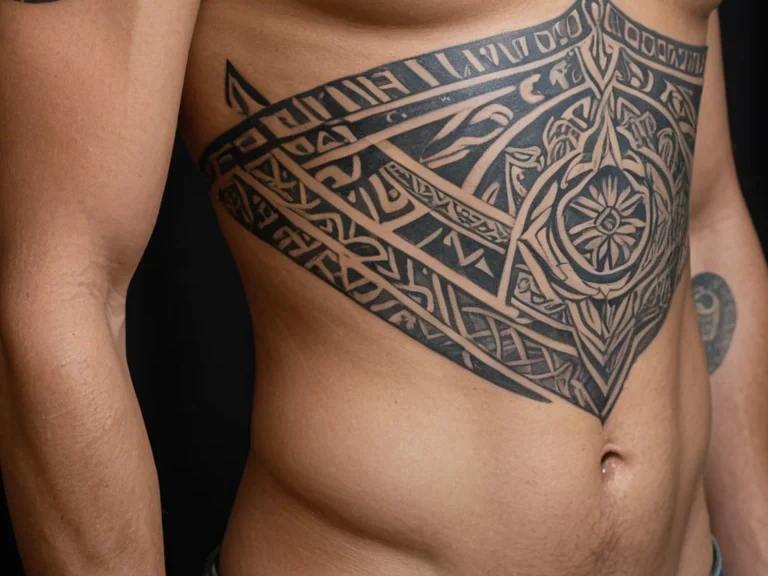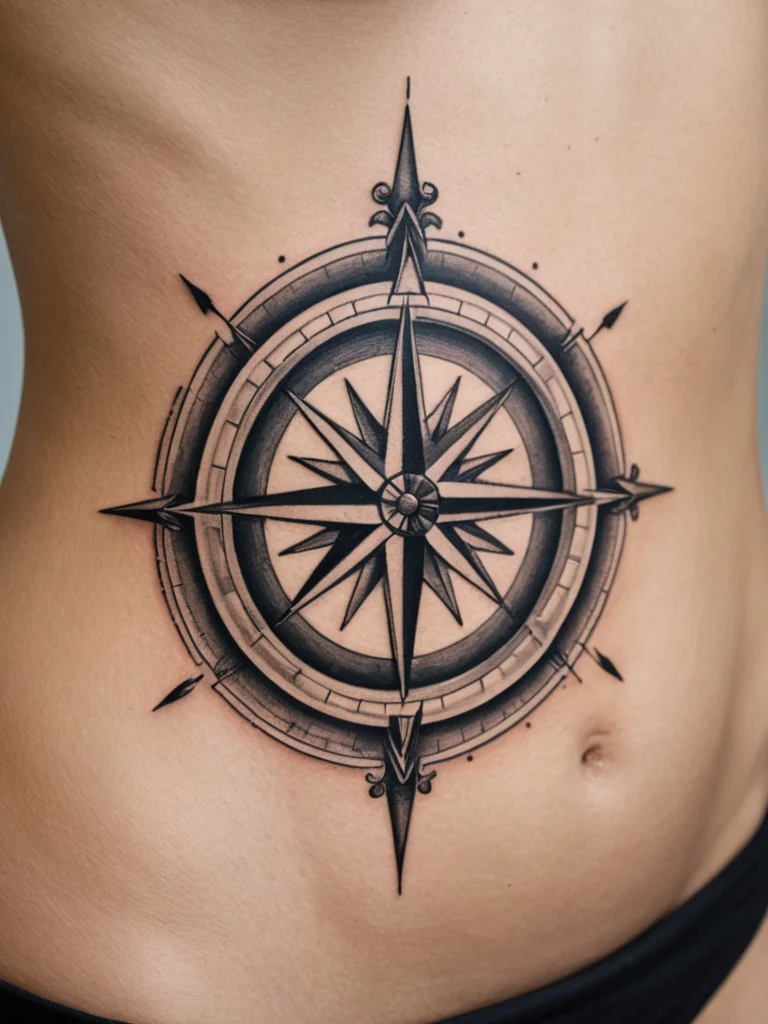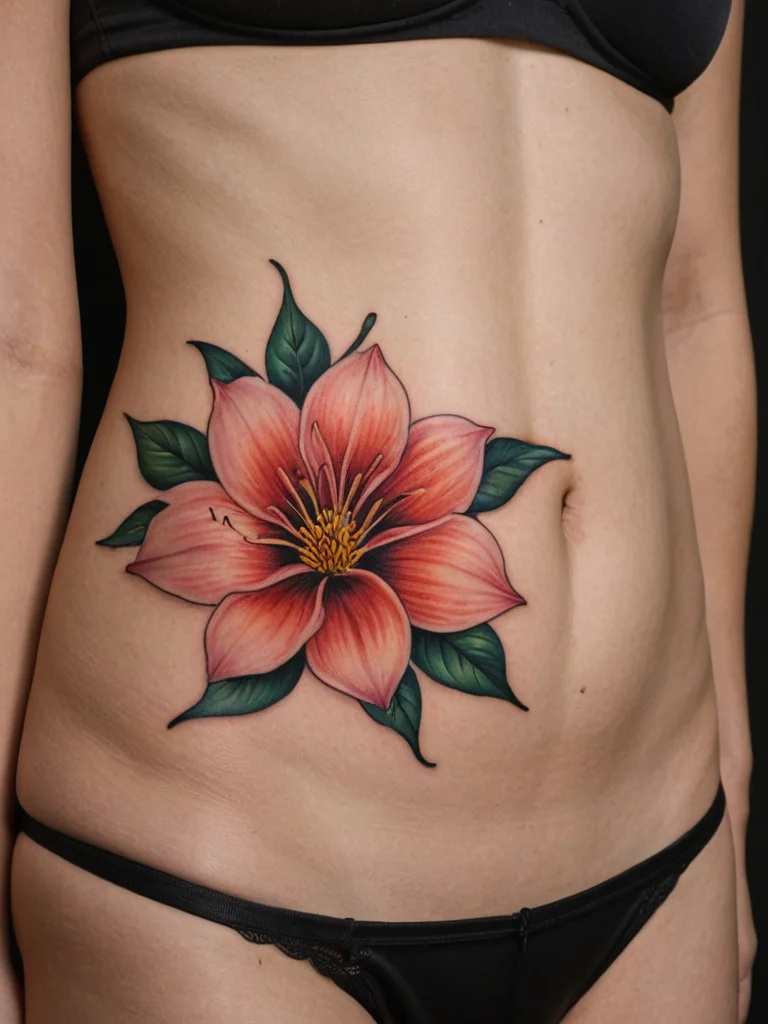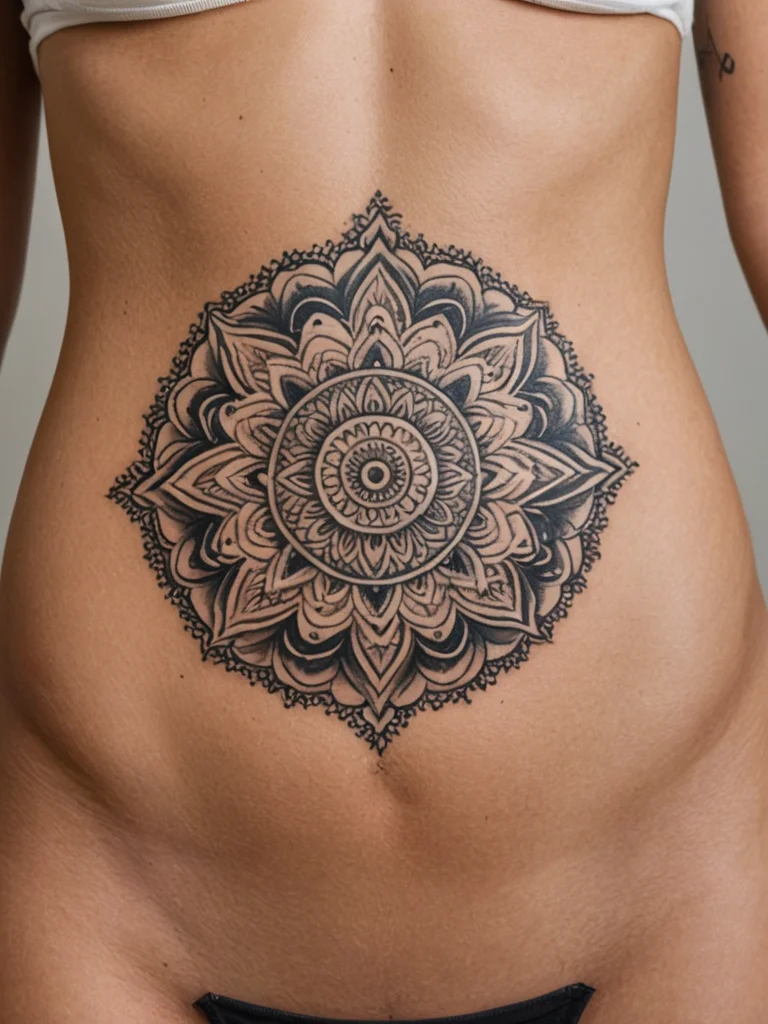The realms of personal aesthetics have undergone a fascinating transformation in recent decades, with both tattoos and cosmetic surgery experiencing an unprecedented surge in popularity. Where once body art might have been confined to specific subcultures, today it is a widespread form of self-expression, adorning bodies across all walks of life. Similarly, cosmetic procedures, once shrouded in secrecy, are now openly discussed and widely sought after, helping individuals achieve their desired physical contours and boost their confidence. As these two powerful forces in personal transformation converge, a natural and crucial question arises for many individuals: what happens when the desire for a sculpted physique meets cherished, often intricate, tattoo artwork? Can you indeed undergo a cosmetic procedure like a tummy tuck or a breast lift on an area that bears significant ink? The short answer, as experienced tattoo artists and plastic surgeons will confirm, is yes, it is possible. However, the more comprehensive and essential answer involves a nuanced understanding of how these procedures fundamentally alter the canvas of your skin, and by extension, the art it holds. It is a complex interplay of anatomical changes, artistic considerations, and careful planning that demands thorough investigation before embarking on such a transformative journey. For those who view their tattoos not merely as decorations but as integral parts of their identity and personal history, preserving their integrity through a surgical process becomes a paramount concern. This article aims to provide a detailed, expert guide through this intricate landscape, equipping you with the knowledge needed to make informed decisions and safeguard the beauty of both your body and your artwork.

How cosmetic surgery impacts tattoos: Understanding the core mechanics
To truly grasp the potential outcomes of undergoing cosmetic surgery on a tattooed area, it is imperative to delve into the fundamental physiological changes that these procedures induce. Cosmetic surgery, at its core, involves reshaping the body by manipulating its tissues, primarily skin, fat, and muscle. This manipulation inevitably impacts any artwork permanently embedded within the skin layers. Understanding these core mechanics is the first step toward anticipating how your tattoos might respond.
The most significant and immediate impact stems from the concept of skin stretching, contraction, and removal. Procedures like abdominoplasty (tummy tuck), breast lifts, or arm lifts involve the excision of excess skin and the subsequent tightening and repositioning of the remaining tissue. Imagine your skin as a finely woven fabric; when a section is removed, the surrounding fabric must be pulled taut to close the gap. This pulling action directly stretches the tattoo, much like pulling a printed photograph in opposite directions. The intricate lines of your design can thicken, delicate shading might become diffuse, and the overall proportions of the artwork can be visibly distorted. Furthermore, if a tattoo lies directly within the section of skin targeted for removal, it will, by definition, be entirely excised. This is not merely a matter of a small part being lost; entire narratives, symbols, or significant portraits could be irrevocably gone, leaving a blank or scarred area in their place.
Another critical factor is scarring. All surgical incisions, by their very nature, result in scars. Modern surgical techniques aim to minimize scar visibility, but scars are an inherent part of the healing process. When an incision traverses a tattooed area, the resulting scar will disrupt the tattoo’s design. The ink within the scar tissue itself may appear lighter or even completely absent, as the skin’s structure has been fundamentally altered. Moreover, scar tissue behaves differently from unscarred skin; it can be thicker, firmer, and less elastic, potentially causing puckering or unevenness within the tattoo. The type of scar (e.g., fine line, hypertrophic, or keloid) also plays a role. Hypertrophic scars and keloids, which are raised and often discolored, can significantly obscure or disfigure a tattoo, making its original artistry unrecognizable. Tattoo artists frequently advise against tattooing over fresh scars, and the reverse holds true: surgery over existing tattoos creates new scar tissue that will inevitably interact with the ink.
Pigment distortion is a direct consequence of both stretching and scar formation. When skin is stretched, the pigment particles embedded in the dermis are pulled apart, leading to a less concentrated appearance. A vibrant, solid black might become a faded grey, and a rich blue could transform into a muted sky tone. This can subtly alter the color palette of your tattoo, diminishing its original intensity and contrast. In areas of significant stretching or near incisions, the ink may also appear mottled or uneven. Beyond this, the natural healing process and inflammation post-surgery can, in rare cases, affect the stability of the ink, leading to subtle shifts in color or even slight fading over time as the body recovers and rearranges its cellular structures.
Finally, the overall surgical trauma, including disruptions to blood supply and the healing process, can indirectly affect the tattoo’s long-term vibrancy. Any surgical procedure places stress on the body and requires significant healing energy. While rare, compromised blood supply to a skin flap containing a tattoo could theoretically impair the longevity of the ink, though this is more of a concern for the viability of the skin flap itself. More commonly, the extended healing period means the tattooed area will be under unique stress, and its appearance will continue to evolve as swelling subsides and tissues settle. It is a delicate balance of physical recovery and aesthetic preservation, requiring a deep understanding of how the body responds to both surgical intervention and the presence of permanent ink.

Procedure-specific outcomes: What a tummy tuck, lift, or liposuction means for your ink
The impact of cosmetic surgery on your tattoos is not uniform; it varies significantly depending on the specific procedure you undergo, the location of your tattoos, and the extent of the surgical intervention. Each procedure presents unique challenges and outcomes for existing body art. Understanding these nuances is crucial for setting realistic expectations and planning effectively.
Abdominoplasty, commonly known as a Tummy Tuck, is perhaps one of the most impactful procedures for tattoos due to the extensive skin removal and tightening involved. If you have tattoos on your lower abdomen, particularly below the belly button, there is a very high probability that they will be entirely removed. A standard tummy tuck involves an incision from hip to hip, typically just above the pubic area, and another around the belly button. The skin between these two incisions is then excised. This means any artwork within that large swath of skin will be gone. For tattoos on the upper abdomen, above the belly button, they will not be removed, but they will be significantly stretched downwards as the remaining skin is pulled taut to create a flatter, tighter contour. This downward pull can distort vertical elements, making them appear elongated, while horizontal elements might become wider. The belly button itself is often repositioned through a new opening, meaning any tattoo surrounding it will also be disrupted and potentially shifted. Imagine a full stomach piece: a large, intricate design could be bisected, with the lower half removed and the upper half stretched and displaced. The resulting scar, running horizontally across the lower abdomen, will also cut directly through any tattoo in that path, creating a stark visual division.
Breast Lift (Mastopexy) or Breast Reduction (Mammoplasty) procedures also present unique considerations for tattoos on the chest and breasts. These surgeries involve removing excess skin, repositioning the nipple-areola complex, and reshaping the breast tissue. The common incision patterns—the ‘anchor’ shape (around the areola, vertical down to the breast crease, and horizontally along the crease), the ‘lollipop’ (around the areola and vertical), or the ‘crescent’ (above the areola)—will directly intersect any tattoos in these areas. A tattoo on the lower pole of the breast might be partially or entirely removed with the excised skin. Tattoos on the upper breast or décolletage might experience stretching and subtle repositioning as the breast mound is lifted. A design that beautifully flowed across the chest might find its elements separated by scars, or the overall composition might be subtly altered due to the changes in breast shape and projection. For those with intricate chest pieces or tattoos specifically designed to flow with the natural curves of the breasts, these procedures require careful consultation to understand how the surgical reshaping will impact the artistic integrity.
Liposuction, while less invasive than excisional surgeries, still has implications for tattooed skin, though generally less dramatic. Liposuction removes pockets of fat through small incisions, but it does not primarily involve skin removal. However, skin elasticity is key to a good liposuction result, as the skin needs to retract and tighten over the newly contoured area. If the skin’s elasticity is poor, or if a large volume of fat is removed, the skin over the tattooed area might become looser, ripple, or even appear somewhat dimpled, potentially altering the smooth canvas of the tattoo. Conversely, if the skin retracts very well, the tattoo might appear slightly more compressed or its colors slightly denser. The incisions for liposuction are usually very small and strategically placed in inconspicuous areas, so direct disruption of the tattoo design by a scar is less likely unless the tattoo itself is tiny and unlucky in its placement relative to the entry points. The main concern here is more about the surface texture and tightness of the skin over the tattooed area rather than direct removal or severe distortion of the ink itself.
Beyond these common procedures, other body contouring surgeries like Arm Lifts (Brachioplasty) or Thigh Lifts (Thighplasty) carry similar implications to a tummy tuck for tattoos located on the inner arms or thighs. These procedures involve significant skin excision along the length of the limb, leading to substantial stretching and direct cutting of any tattoos in the path of the long, often linear, incisions. A sleeve tattoo, for example, could be dramatically altered, with the inner arm portion being completely reconfigured or partially removed and scarred. Similarly, a tattoo running down the thigh could be bisected or compressed. In all these cases, the extent of the impact is directly proportional to the amount of skin removed and the degree of tightening required. Therefore, a comprehensive discussion with your surgeon, specifically highlighting your tattooed areas, is not just recommended, but absolutely essential to anticipate these procedure-specific outcomes and plan accordingly.

Your action plan: Pre-surgery consultations & post-op tattoo care for best results
Embarking on a journey that combines cosmetic surgery with existing tattoos requires meticulous planning and a proactive approach. Your preparedness, both before and after the procedure, will significantly influence the aesthetic outcome for your body art. This isn’t just about medical safety; it’s about safeguarding the artistic integrity of your skin.
The cornerstone of a successful outcome begins with a comprehensive pre-surgery consultation. This is not a mere formality; it is your opportunity to communicate your priorities and concerns regarding your tattoos. When selecting a surgeon, always prioritize a board-certified plastic surgeon. Beyond certification, seek one with specific experience operating on tattooed patients. Do not hesitate to ask them directly about their experience in this niche area. A skilled surgeon will understand the aesthetic implications of their work on body art. During your initial meeting, be unequivocally clear about the presence of all your tattoos, especially those in or near the surgical field. Show them, explain their significance, and articulate your concerns about their potential alteration. Are you hoping to preserve a specific element? Are you emotionally attached to the piece? This information is invaluable.
One of the most powerful tools in your pre-operative planning is visualizing outcomes. Ask your surgeon if they utilize imaging software that can simulate potential post-operative results, especially if it can incorporate your existing tattoos. While no simulation is perfect, it can provide a valuable foresight into how your ink might stretch, shift, or be impacted by incisions. Request to see before-and-after photos of previous patients with tattoos who underwent similar procedures. This will offer tangible evidence of the surgeon’s skill and artistic sensibility when working with inked skin. Pay close attention to how scars are placed relative to existing designs and how tattoos have responded to stretching or removal. If a surgeon dismisses your concerns about your tattoos, consider it a red flag. Your body art is part of you, and a respectful surgeon will acknowledge its importance.
Crucially, discuss tattoo preservation strategies. While complete preservation is not always possible, particularly with extensive skin removal, a skilled surgeon may be able to strategically place incisions to avoid or minimally impact key elements of your design. For smaller tattoos, it might be possible to excise the tattoo entirely and then perform a precise closure, effectively ‘moving’ the tattoo with the skin flap if it’s within the mobile area, or accepting a linear scar through it. For some very small, non-complex tattoos, a surgeon might even be able to excise and re-suture them into a new, less affected location, although this is rare and highly dependent on size, location, and the specific surgical plan. Be prepared, however, to set realistic expectations. Some degree of alteration, whether stretching, distortion, or partial removal, is often inevitable. Understanding these limitations upfront prevents disappointment later.
The journey does not end with the surgery; post-operative tattoo care is equally critical for optimizing both your surgical results and your tattoo’s appearance. First and foremost, strictly adhere to all of your surgeon’s instructions regarding wound care, activity restrictions, and medication. Proper healing of the surgical site is paramount, as complications can negatively impact both the scar and the overlying tattoo. Once your surgeon gives the green light, typically after initial healing, focus on scar management. Techniques such as silicone sheets or gels, and gentle massage, can significantly improve scar appearance and texture. These practices will directly benefit any tattoo traversing the scar, helping the ink integrate more smoothly with the new tissue. Consistent moisturizing of the surgical area, once safe to do so, will also aid in skin elasticity and help maintain the vibrancy of the surrounding tattoo. Protecting both your scars and your tattoos from the sun is non-negotiable; UV rays can darken scars and fade ink, so apply a high SPF sunscreen diligently.
A frequently asked question is: when can a damaged tattoo be revisited for touch-ups or a cover-up? Tattoo artists and surgeons universally recommend waiting a significant period—typically 6 to 12 months, and sometimes even longer—after surgery. This crucial waiting period allows the surgical scars to fully mature, swelling to completely subside, and the skin to regain as much normal elasticity and sensation as possible. Attempting to tattoo on fresh, unstable scar tissue can lead to poor ink retention, further scarring, or even infection. When the time is right, seek out a highly experienced tattoo artist who has a proven track record of working on scarred or altered skin. This specialized skill set is vital, as tattooing over surgical scars requires a different touch and understanding of how the ink will settle into the modified dermis. Finally, remember that overall health—including proper nutrition, hydration, and avoiding smoking—will support your body’s healing capacity, benefiting both your surgical recovery and the long-term appearance of your treasured body art.
Making the right choice: Selecting a surgeon & managing expectations for your tattooed body
The decision to combine cosmetic surgery with a tattooed body is profound, blending medical science with deeply personal artistry. To navigate this intricate path successfully, two pillars are paramount: selecting the right surgeon and meticulously managing your expectations. Your body, adorned with its unique story in ink, deserves nothing less than the most skilled hands and a realistic understanding of the journey ahead.
Selecting a surgeon is arguably the most critical step. Do not compromise on qualifications. The absolute minimum requirement is to ensure your chosen plastic surgeon is board-certified. This certification signifies that they have undergone rigorous training, adhered to strict ethical standards, and passed comprehensive examinations in their specialty. Beyond this foundational qualification, delve deeper into their specific experience with tattooed patients. This is not a trivial detail. An experienced surgeon in this context will appreciate the unique challenges of operating on inked skin. They will understand that a tattoo is not just skin to be cut or tightened, but a piece of art with aesthetic and emotional value. Ask pointed questions: how many tattooed patients have they treated? Can they share specific examples of how they managed tattoos during similar procedures? A surgeon who regularly works with tattooed individuals will be more attuned to strategic incision placement, scar minimization techniques, and the overall artistic impact of their work on existing designs.
A surgeon’s portfolio review is invaluable. Request to see before-and-after photos of their previous patients, with a particular emphasis on those who had tattoos in the surgical area. This allows you to visually assess their results and understand how tattoos have been affected. Look for clarity in the images and ask for multiple angles. Does the surgeon highlight the tattoo’s appearance post-surgery? This can be a strong indicator of their awareness and consideration for body art. Beyond technical skill, assess their communication style. Does the surgeon genuinely listen to your concerns about your tattoos? Do they provide clear, empathetic, and realistic answers? A good surgeon will be transparent about what is achievable and what is not, explaining the limitations without dismissing your feelings. Avoid any surgeon who seems indifferent to your tattoos or who promises unrealistic outcomes. Ideally, a surgeon might even have connections or recommendations for tattoo artists who specialize in working on scarred or surgically altered skin, demonstrating a holistic approach to your aesthetic journey.
Equally vital to a successful outcome is the practice of managing your expectations. This involves a deep internal reflection and acceptance of potential changes. First and foremost, understand and accept that your tattoos will likely not look exactly the same after surgery. They might be altered, stretched, or have parts removed. The goal is to achieve the best possible cosmetic outcome for your body while preserving the integrity of your tattoos to the greatest extent possible, but compromise is often inherent. You must prioritize your goals: is the primary objective the physical transformation, or is it the preservation of your tattoo’s original form, even if it means a less dramatic surgical result? Sometimes, a difficult choice between these two priorities must be made, and a clear understanding of your own desires will guide you.
Be emotionally prepared for the aesthetic alteration of beloved artwork. For many, tattoos are deeply personal and symbolic. Seeing them stretched, bisected by scars, or partially removed can be an emotional challenge. Acknowledging this potential impact beforehand can help you process the changes post-surgery. Consider therapy or support groups if you anticipate significant emotional distress. Finally, be open to the possibility that the best long-term solution for a severely distorted tattoo might involve a new artistic journey. This could mean tattoo removal, either partial or complete, to create a clean slate, or a skillful cover-up by a talented artist who can integrate the existing altered design and surgical scars into a new, compelling piece. Remember that healing takes time, and the final appearance of both the surgical area and the tattoo will continue to evolve over many months. Patience, along with a realistic outlook, a highly skilled surgical team, and an understanding of the intricate dance between skin and ink, will pave the way for a satisfying transformation that honors both your body and your art.
